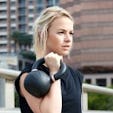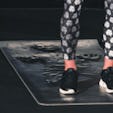Ready to get started with kettlebell training, but don’t know where to begin? No problem. This article will provide you with all the information you need to pick the correct kettlebell weight, whether you’re a man or a woman, experienced or a total noob.
What’s The Best Starting Kettlebell Weight For Men?
Men tend to OVER-estimate the amount of weight they can lift with kettlebells. If you’re used to conventional training, doing exercises like bench press and curls, or using weight machines, a kettlebell that’s only 35 pounds might seem too light.
The thing is though, kettlebell training recruits muscle from all over your body, and your ability to stabilize the weight you use depends on your core and grip strength. These are limiting factors. Kettlebell lifting is also very dependent on skill—your technique has to be really crisp. The heavier you go, the more likely you’ll muscle the weight up rather than lift it with correct form. Lighter weights allow you to learn your exercises perfectly (and once you do, you’ll be able to handle much heavier weights with greater ease).
“If you’ve been in the iron game for a while,” says John Wolf, former Chief Fitness Officer for Onnit—that is, you have experience with barbells, dumbbells, and strength training in general—“I recommend starting with a 16-kilo bell,” which is a little over 35 pounds. “If you’re brand new to training, I recommend a 12-kilo bell,” (a little more than 26 pounds).
What’s The Best Starting Kettlebell Weight for Women?
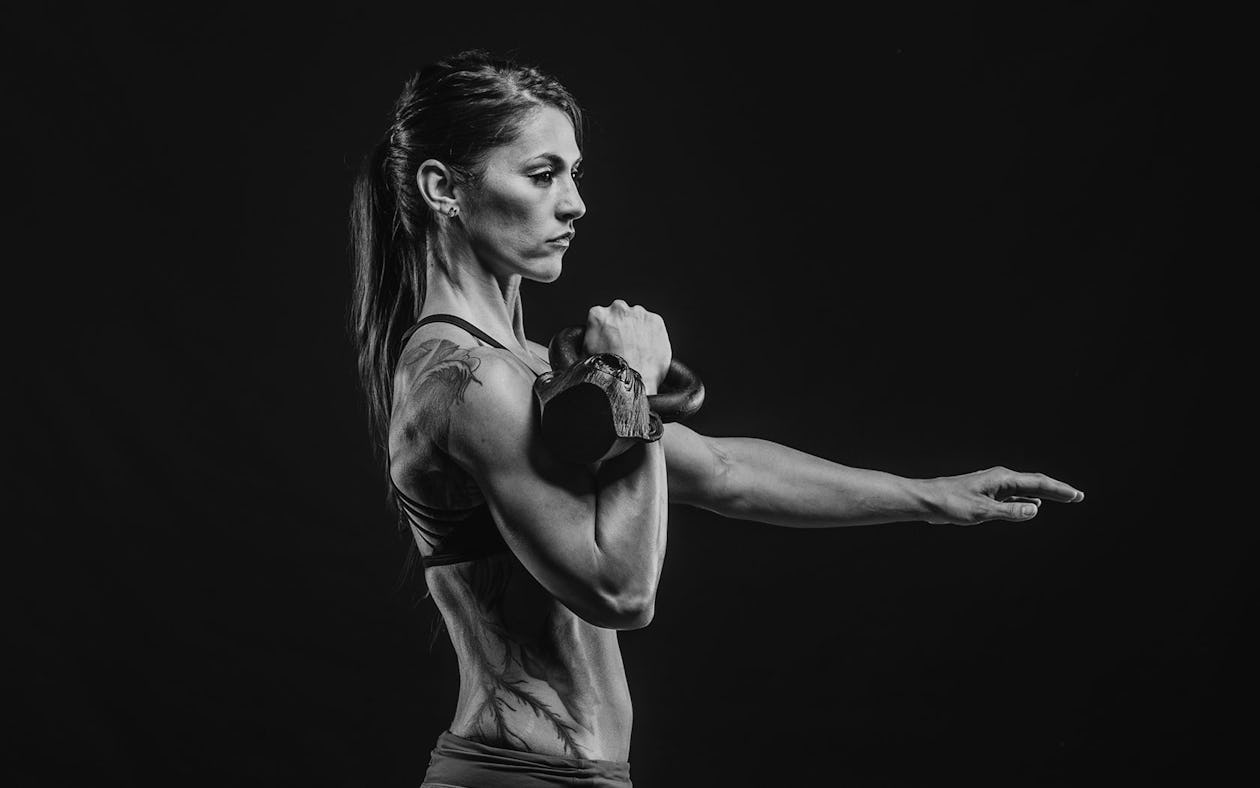
Women, on the other hand, tend to UNDER-estimate the amount they can lift. They might pick up a light kettlebell and think it’s too heavy, but they don’t realize that they’ll be using it for full-body exercises like the goblet squat, swing, and clean. Because your whole body is working—not just one or two muscles in isolation—you can probably handle more weight than you think. That’s why Wolf recommends women start with an 8kg kettlebell, which is a little under 18 pounds. “If you’re new to weight training in general,” he says, “the six-kilo bell may be more appropriate.” (Six kilos is about 13 pounds.)
When Should I Go Up In Weight?
Kettlebells typically go up in weight in increments of four kilograms, which is about 10 pounds. On some exercises, this can be a big jump, so get used to the idea of sticking with one weight for a while until you feel you’ve really mastered it. If you start out doing, say, three sets of five reps for most of your exercises, you might aim to progress to where you’re doing five sets of six to eight reps before you graduate yourself to the next weight increment. If you began by doing your reps at a normal or brisk tempo (the speed at which you lift), work on slowing them down, especially the negative (lowering) portion of each rep. Lifting with less momentum and more control puts a greater challenge on your muscles and your technique.
When you feel that your lower body isn’t being challenged enough—that is, you can do several more reps on your squat, deadlift, hinge, and other lower body-based movements than you started—it’s probably time to go up to the next weight level. Another marker of progress, says Wolf, is your pressing strength. “If you can do an overhead press with the bell super-slow for five reps, and you can do that set over set, chances are it’s time to move up.” Of course, you’ll progress faster on some exercises than others, so it’s ideal to have at least two kettlebells of different weights so you can choose the one that’s optimal for the given exercise at the given time.
![What Is The Best Kettlebell Weight To Start With? What Is The Best Kettlebell Weight To Start With?]() What Is A Pood?
What Is A Pood?
No, it’s not some new slang term that all the coolest rappers are using. Nor is it a baby talk synonym for fecal matter. A pood is simply the Russian measurement of weight. In Russia, where kettlebells originated, kettlebells are measured in poods, and a pood is equal to roughly 16 kilograms, or 36 pounds. You’ll hear this term used in CrossFit gyms and by some traditional kettlebell instructors.
4 Things To Look For In A Kettlebell
In addition to finding the right weight, you should make sure any kettlebell you use has these four features.
1. A Comfortable Handle
“Kettlebell instructors often recommend a thicker-diameter handle,” says Wolf, “which will increase the challenge to your gripping muscles.” However, such handles aren’t a great choice when you’re new to kettlebells and trying to develop technique. “Fatiguing your hands will be a big limiting factor in getting the best workout,” says Wolf, who recommends finding a bell with a handle that fits your hand comfortably.
2. The Kettlebell Should Rest Against Muscle, Not Bone
A kettlebell’s “window” is the space between the bottom of its handle and the ball of iron itself. Wolf says it should be wide enough to allow the bell to rest on the muscle of your forearm, not the bone that sticks out on your wrist, when you hold the kettlebell in the rack position (hand at shoulder level, knuckles pointing to the ceiling, and elbow tucked to your side). Learning to clean a kettlebell properly will reduce the likelihood of the weight banging into your wrist and bruising it, but choosing a more ergonomic kettlebell design is critical as well.
3. Powder Coating
A good kettlebell will have a slightly rough, grainy texture to its handle. This is a sign that it was powder coated, and will help you keep your grip even when your hands get sweaty. “It gives you a little bit of friction,” says Wolf, “while still allowing your hand to move around the handle freely.” Don’t confuse a rough texture with burrs—sharp edges or bumps that protrude from the handle. Burrs are a sign of a cheap bell that will grate your hands like a block of cheese with continued use.
4. Color Coding
Most kettlebells are dark in color and many look alike from a distance. If you do circuit training with kettlebells, in which you perform several exercises in a row in sequence, you’ll likely have to change weights, and it’s much easier to grab the right one if you can look at the handle and know in a glance what the weight is. Onnit’s kettlebells are coded as follows:
6 kilograms = baby blue
8 kilograms = pink
12 kilograms = dark blue
16 kilograms = yellow
Kettlebell Strength and Mobility Workout
Once you’ve found the right kettlebell weight, you can experiment with it in the following workout, which was designed by Onnit-certified coach and kettlebell expert Eric Leija (@primal.swoledier on Instagram). The routine combines basic kettlebell movements with bodyweight exercises and mobility drills, delivering the best of all worlds—strength, conditioning, and greater range of motion and body control in different planes of movement. This is an awesome routine for those who want to get familiar with kettlebell training, as well as more advanced exercisers who may want to train for better sports performance and overall athleticism.
Directions
Perform the exercises as a circuit. So you’ll do one set of each in sequence, resting as little as possible between movements. Repeat for as many rounds as possible (AMRAP) in 15 minutes. Over time, try to increase your speed and reduce your rest so that you perform more rounds of the circuit in the same time frame.
See the video above for a demonstration of the exercises and a sample round of the workout. The sample round starts at 03:55.
1. Half-Kneeling Overhead Press
Reps: 5 (each side)
– Keep the shoulder, hip, and knee of the working side in alignment.
– Tense the lat on the working side to keep the shoulder in a strong pressing position.
– Maintain a vertical torso with your core braced. Avoid bending or twisting to either side.
2. Pushup
Reps: 10
– Point your elbows out 45 degrees from your sides.
– Lower your chest as far as you can without losing tension in your core.
– If the standard pushup is too hard, or you get fatigued before 10 reps, it’s OK to rest your knees on the floor.
3. Child’s Pose To Arm Thread
Reps: 3 (each side)
– Press your palms flat into the floor.
– Keep your pelvis level with the floor as you twist your torso.
4. Deadlift to Clean and Squat
Reps: 5
– Tilt your tailbone back and push your hips backward (a hinge movement) to reach down and grasp the kettlebell.
– Maintain a “proud chest” position: shoulders pulled back and down.
– Keep your torso vertical and drive your knees out as you sit down into the squat.
5. Step-Over Lateral Lunge
Reps: 5 (each side)
– Bring the knee up and out in a circular motion to begin the rep.
– Try to go slightly deeper with each rep.
6. Windshield Wiper
Reps: 3 (each side)
– Drive your palms into the floor the entire time, and keep your chest elevated.
– Keep your knees bent 90 degrees.
Take Your Kettlebell Training to a New Level

Few tools are as versatile and portable as the kettlebell. Whether you’re a trainer or fitness enthusiast, the kettlebell should have a place in your training for the results it can deliver.
Whether you decide to use your kettlebell to supplement the training you already do, or as a stand-alone tool, there’s a system that can help you get the most out of it.
The Kettlebell Specialist Course was created to give the user a simple, powerful approach to learning and teaching proper kettlebell techniques.
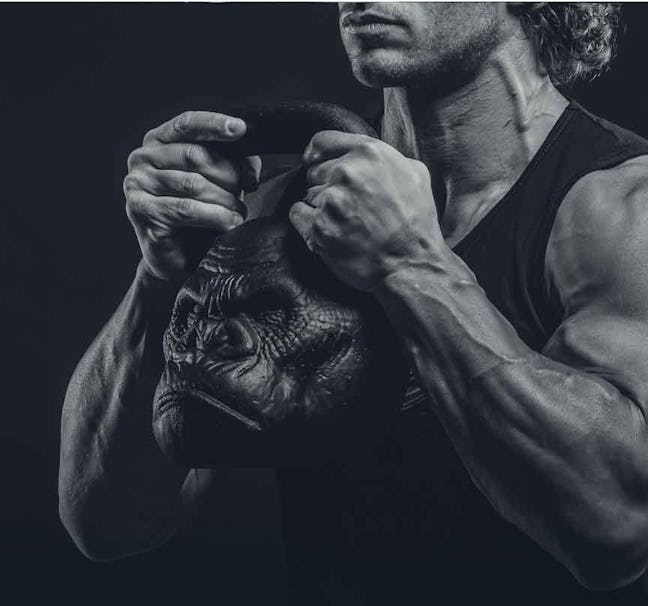
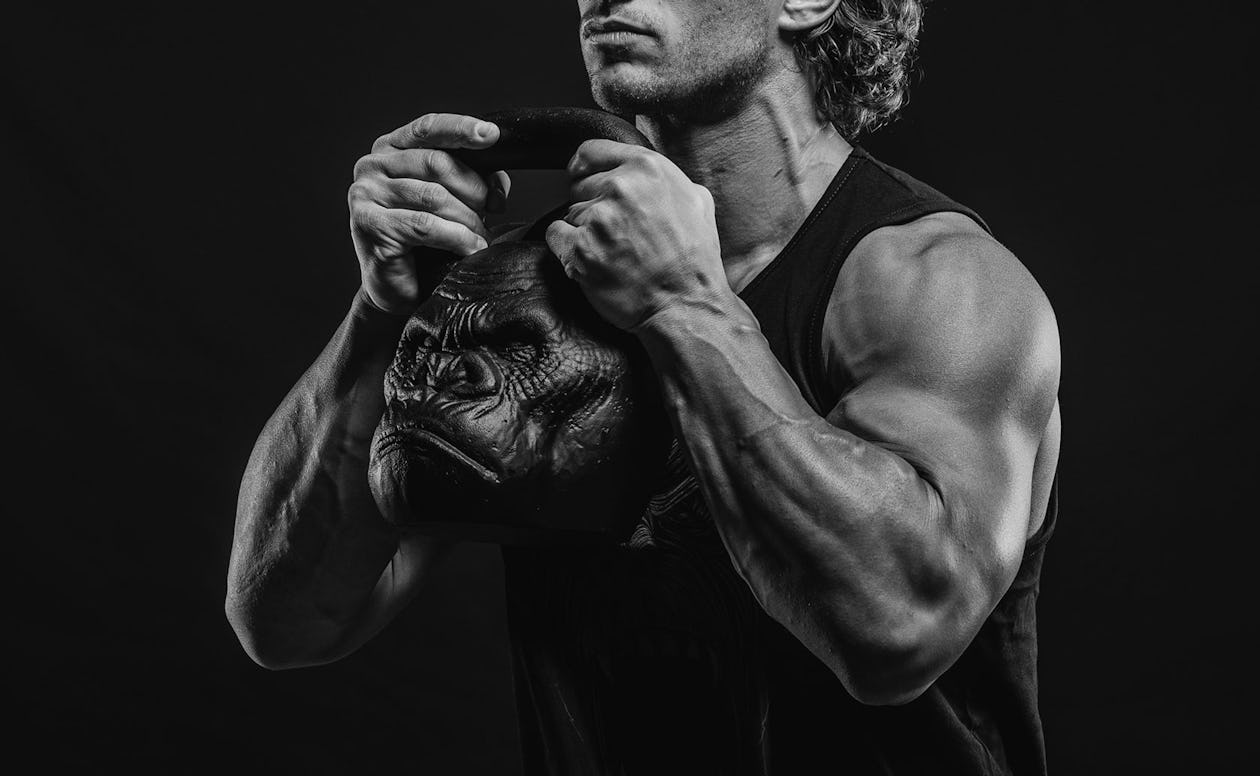 What Is A Pood?
What Is A Pood?)
